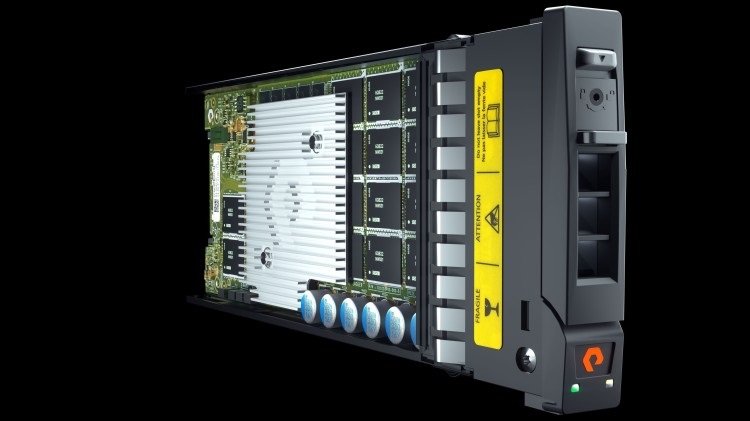Pure Storage today announced the second generation FlashArray//C, reducing the cost of running capacity-oriented workloads so significantly, that it eliminates the need for legacy hybrid disk arrays. The only all-QLC storage array, FlashArray//C is built on Pure’s DirectFlash technology and Purity software platform to deliver enterprise-grade performance and features cost-effectively.
With the second generation of FlashArray//C, Pure is transforming raw QLC into a high-endurance medium while delivering new cost economics that are 30% less than similarly sized hybrid storage arrays on the market today. FlashArray//C is available with 24.7TB and, the industry’s largest, 49TB QLC DirectFlash modules providing the lowest possible total cost of ownership. This makes all-flash accessible for use cases previously relegated to spinning disk or other inefficient hybrid solutions.
Pure’s FlashArray portfolio greatly simplifies and streamlines IT operations by enabling customers to house all their data on one agile data services platform – with FlashArray//C for their capacity-oriented workloads and FlashArray//X for performance-intensive workloads, and in the cloud with Cloud Block Store. Common data services across the FlashArray platform make it fast and easy to access, manage, and secure data across multiple workloads, geographies, and clouds. By federating data from high-capacity use cases (i.e. backup stores and workload consolidation) and high-performance use cases (i.e. cloud-native databases) in one place, organizations can derive business value by applying powerful analytics across their platform, with common APIs, monitoring, and world-class support.
FlashArray//C enables customers to consolidate workloads and simplify storage with consistent, cost-competitive all-flash performance. Replacing disk and hybrid systems with FlashArray//C lowers costs for rack space, power, cooling, operations and maintenance and the availability of high-capacity, low-cost storage enables enterprises to redirect IT resources away from routine operations and toward delivering new services.




